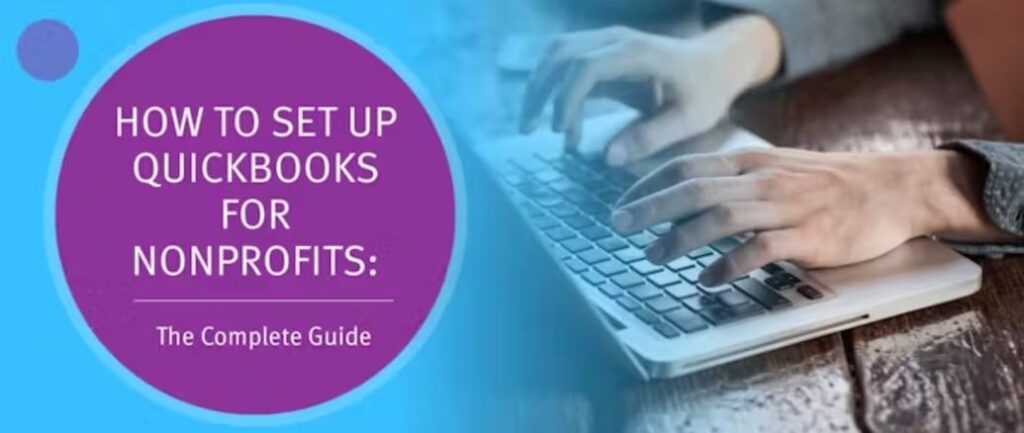How to set up QuickBooks for a nonprofit organization

Setting up QuickBooks for a nonprofit organization involves configuring the software to effectively manage donations, grants, expenses, and compliance reporting specific to the nonprofit sector. This comprehensive guide covers essential steps and best practices to help nonprofits set up QuickBooks for efficient financial management and transparency.
1. Choosing the Right QuickBooks Version for Nonprofits
A. QuickBooks Online vs. QuickBooks Desktop
1. QuickBooks Online
- Accessibility: Access from anywhere with internet connectivity.
- Automatic Updates: Receive updates without manual installations.
- Collaboration: Multiple users can work simultaneously.
2. QuickBooks Desktop
- One-time Purchase: No recurring subscription fees.
- Customization: Greater control over data and security.
- Advanced Features: Comprehensive tools for complex nonprofit needs.
B. Determine Your Nonprofit’s Needs
1. Fund Accounting
- Track donations, grants, and restricted funds separately.
- Generate reports for donors, board members, and regulatory agencies.
2. Donor Management
- Capture donor information and track contributions.
- Send acknowledgments and donor statements.
3. Grant Management
- Manage grant budgets, expenses, and reporting requirements.
- Track grant deliverables and outcomes.
2. Setting Up QuickBooks for Nonprofits
A. Initial Setup
1. Company Information
- Enter nonprofit details: name, address, contact information.
- Customize invoices, receipts, and donation forms.
2. Chart of Accounts
- Create accounts tailored to nonprofit categories (e.g., Contributions, Program Expenses, Administrative Costs).
- Go to “Lists” > “Chart of Accounts” > “New.”
B. Customize Preferences
1. Donor and Fund Management
- Set up classes or funds to track restricted and unrestricted donations.
- Customize forms to include donor-specific fields (e.g., donor names, contribution details).
2. Nonprofit Reporting
- Customize financial reports for nonprofit-specific metrics (e.g., fundraising efficiency, program impact).
- Go to “Reports” > “Nonprofit Reports” > “Customize Report.”
3. Managing Donations and Contributions
A. Track Donations
1. Donor Contributions
- Record donations received from individual donors and organizations.
- Categorize contributions by donor type (e.g., individual, corporate, foundation).
2. Acknowledgments and Receipts
- Send thank-you letters and donation receipts to donors.
- Ensure compliance with IRS requirements for charitable contributions.
4. Grant and Fund Management
A. Manage Grants
1. Grant Tracking
- Set up grants as customers or projects to track funds received and expenses incurred.
- Allocate expenses to specific grant budgets.
B. Fund Accounting
1. Fund Reporting
- Generate reports to track fund balances and expenditures.
- Monitor compliance with donor restrictions and grant terms.
5. Expense Tracking and Budgeting
A. Expense Management
1. Enter Expenses
- Record program expenses, administrative costs, and fundraising expenses.
- Allocate expenses to appropriate accounts and programs.
B. Budget Preparation
1. Budgeting Tools
- Create annual budgets for programs and organizational operations.
- Compare actual expenses against budgeted amounts regularly.
6. Reporting and Analysis
A. Financial Reports
1. Statement of Financial Position
- Generate balance sheets to show assets, liabilities, and net assets.
- Provide a snapshot of the nonprofit’s financial health.
2. Statement of Activities
- Create income statements to show revenues, expenses, and changes in net assets.
- Analyze financial performance over time.
7. Payroll and Compliance
A. Payroll Management
1. Nonprofit Payroll
- Set up payroll for employees and track payroll expenses.
- Ensure compliance with payroll tax withholding and reporting requirements.
B. Compliance with Regulations
1. IRS Reporting
- File Form 990 or Form 990-EZ annually with the IRS.
- Provide transparency on financial activities and governance.
8. Security and Permissions
A. User Roles and Permissions
1. Access Control
- Assign roles with specific permissions (e.g., financial manager, program director).
- Restrict access to sensitive financial data and reports.
B. Data Backup and Security
1. Backup Procedures
- Regularly backup QuickBooks data to prevent loss.
- Store backups securely on-site or in the cloud.
9. Integration and Automation
A. Third-Party Integrations
1. Donation Management Systems
- Integrate QuickBooks with donor management platforms for seamless donation tracking.
- Automate data entry and reconciliation processes.
B. Automation Tools
1. Workflow Automation
- Use automation to streamline donation receipting, expense categorization, and financial reporting.
- Improve efficiency and accuracy in financial management tasks.
10. Best Practices for Nonprofit Financial Management
A. Transparent Financial Practices
1. Board Oversight
- Provide regular financial reports to the board of directors.
- Ensure board members understand financial statements and reports.
B. Audit Readiness
1. Financial Audits
- Prepare for annual audits or reviews by external auditors.
- Maintain accurate records and documentation for audit trails.
11. Troubleshooting and Support
A. Handling Issues
1. Software Updates
- Keep QuickBooks updated to access new features and security patches.
- Address software compatibility issues promptly.
B. QuickBooks Support
1. Technical Assistance
- Contact QuickBooks Support for assistance with nonprofit-specific issues.
- Visit the QuickBooks Support website for resources and troubleshooting guides.
C. Community Forums
1. Nonprofit Community
- Engage with the QuickBooks Community for insights and advice.
- Discuss nonprofit financial management strategies and solutions with other users.
12. Conclusion
Setting up QuickBooks for a nonprofit organization involves tailoring the software to meet the unique financial management and reporting needs of nonprofits. By following this comprehensive guide, nonprofits can effectively manage donations, grants, expenses, and compliance requirements with transparency and accuracy. Leveraging QuickBooks’ features for fund accounting, donor management, and financial reporting ensures that nonprofits can focus on their mission while maintaining fiscal responsibility and regulatory compliance. Efficient use of QuickBooks enables nonprofits to optimize financial operations, enhance donor relationships, and achieve long-term sustainability in fulfilling their charitable goals.




